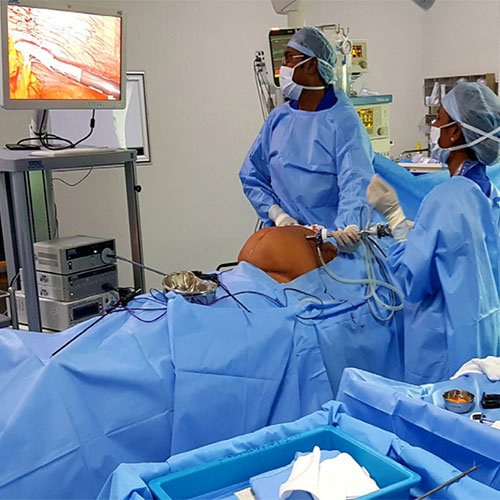
Laparoscopic Gynec Surgery
Laparoscopic Gynec Surgery
Laparoscopic gynecological surgery is a minimally invasive surgical technique used to diagnose and treat various conditions affecting the female reproductive system. This approach utilizes small incisions, a camera (laparoscope), and specialized instruments to perform surgeries, resulting in less pain, reduced recovery time, and minimal scarring compared to traditional open surgery.
Laparoscopic gynecological surgery is a highly effective option for managing various gynecological conditions, offering significant benefits over traditional surgical methods. If you’re considering this type of surgery, consult with a qualified gynecologist to discuss the best options for your specific situation and to understand the procedure, risks, and recovery expectations fully.

Common Conditions Treated with Laparoscopic Surgery
Endometriosis: Laparoscopy can be used to remove endometrial tissue that grows outside the uterus, alleviating pain and improving fertility.
Uterine Fibroids: Surgeons can perform myomectomy (removal of fibroids) through laparoscopy, preserving the uterus while relieving symptoms such as heavy bleeding.
Ovarian Cysts: Laparoscopic surgery allows for the removal of cysts from the ovaries with minimal recovery time.
Pelvic Inflammatory Disease (PID): In cases where PID leads to abscesses or chronic pain, laparoscopy can be used for drainage or removal of affected tissues.
Ectopic Pregnancy: This procedure can be used to remove an ectopic pregnancy safely.
Hysterectomy: Laparoscopic hysterectomy is performed to remove the uterus while preserving surrounding tissues, leading to quicker recovery.
Advantages of Laparoscopic Surgery
- Minimally Invasive: Small incisions (usually 0.5 to 1 cm) lead to less pain and quicker recovery.
- Reduced Hospital Stay: Many laparoscopic procedures are performed on an outpatient basis, allowing patients to return home the same day.
- Quicker Recovery: Patients generally experience a faster return to normal activities, often within a week.
- Less Scarring: The smaller incisions result in minimal scarring, improving aesthetic outcomes.
